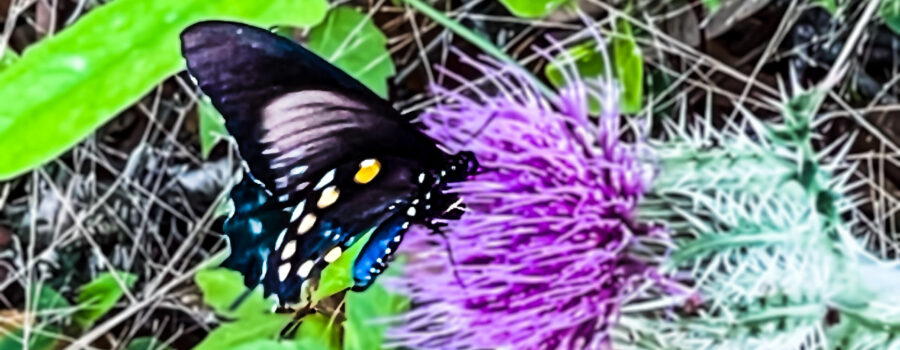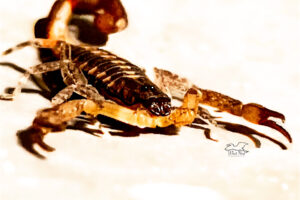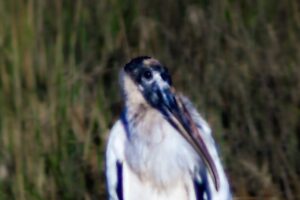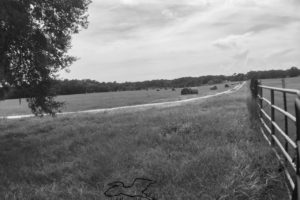The Pipevine Swallowtail is a Beautiful Spring Butterfly

One of our prettiest butterflies, in my opinion, is the pipevine swallowtail (Battus philenor). I just love the vibrant blue bodies and hind wings of the males. The females are quite attractive, too, but are a little more muted in their coloration. They tend to be one of the first butterflies to emerge in the spring, and they will continue to fly throughout most of the summer. They tend to be very active butterflies that don’t stay still for very long, so I’ve been trying to get some decent images of them of awhile now. Even while they are feeding, like the one above, they tend to flutter their wings, an action known as nectaring.
The pipevine swallowtail is so called because the caterpillars feed exclusively on pipevine plants in the genus Aristolochia. All of these plants contain aristolochic acid, which gives the caterpillars and later the adults butterflies a bad taste and helps them to avoid predators. The calico flower or elegant pipevine is one example of a pipevine plant that can be found here in central Florida. The pipevine swallowtail is also often called the blue swallowtail for obvious reasons. It can be found from southern New England through central Florida and west as far as Arizona. Stragglers can sometimes be found roaming north into Ontario and south into Mexico. There is also a small population in Southern California.
Even though larval pipevine swallowtails are particular eaters, the adults are not. They will feed on the nectar of a great many plants but those of purple thistles, Drummond’s phlox, and iron weed tend to be their favorites. Males are also known to go to mud puddles to drink, a behavior known as puddling. It is believed that while puddling, males ingest minerals that are important in the production of the pheromones used to help attract females. Their bright blue hind wings are also thought to be used to attract females. In Florida and the rest of the southern part of their range, there are usually three generations, while further north there tends to be only two.
The butterflies featured in tonight’s photos were both feeding on purple thistle flowers that grow near my property. I was very excited when, while photographing a small spider lurking in the flowers, the butterflies came along and stopped for a moment to feed. Even though they weren’t flying, the wings never stopped, making many of my images unsuitable. I was fairly pleased with these, but I still hope to eventually do a little better. Until then, though, I’m thrilled to have gotten these.





Recent Comments